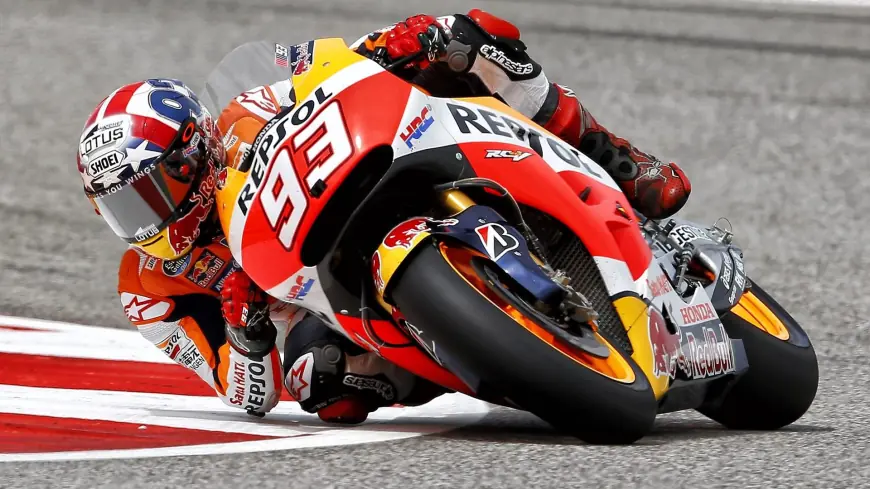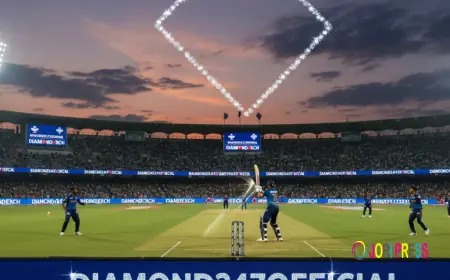The Evolution of MotoGP: Technology Meets Adrenaline

Few sports on Earth match the raw intensity and thrill of MotoGP. The roar of high-performance engines, riders leaning into corners at impossible angles, and the sheer velocity of machines pushing 360 km/h — it’s a breathtaking blend of technology and human courage. But MotoGP is more than just a high-octane race series. It’s a constantly evolving spectacle where mechanical innovation meets physical mastery, where the future of motorcycling is shaped in every lap.
From its roots in post-war Europe to the modern-day global championship, MotoGP has seen massive transformations. What was once a simple race between brave souls and hand-tuned bikes has now become a multimillion-dollar sport governed by data, engineering, aerodynamics, and real-time strategy. Yet, through all the evolution, one thing remains constant: the adrenaline.
The Origins: Racing with Simplicity
MotoGP’s origins can be traced back to the mid-20th century when motorcycle racing was raw, mechanical, and often dangerous. The early bikes were stripped-down versions of road motorcycles — light, fast, and largely mechanical. There were no advanced electronics, no traction control, no ride height adjusters — just man and machine.
Riders of that era relied on instinct, balance, and bravery. Crashes were common, safety measures were minimal, and death was an ever-present risk. But this simplicity created legends — riders who were fearless, tactical, and revered.
The races were often held on public roads or temporary circuits, and the sport had a grassroots feel. Fans would stand just meters from the track, watching riders battle for victory on machines that roared like thunder and left trails of burnt rubber in their wake.
The Rise of the Factory Era
As the decades passed, the sport began to professionalize. By the 1970s and '80s, factory teams — backed by manufacturers like Honda, Yamaha, Suzuki, and later Ducati — began to dominate the paddock. MotoGP became a testing ground for technology that would eventually trickle down to consumer motorcycles.
The bikes evolved too. Engines became more powerful, chassis more refined, and tires more sophisticated. Racing became as much about development as it was about performance. Engineers, mechanics, and data analysts joined the pit wall, working hand-in-hand with riders to extract every possible fraction of speed.
Electronics entered the scene in the 2000s. Traction control, launch control, engine mapping, and ride-by-wire systems redefined the limits of what's possible. While some purists bemoaned the “computerization” of racing, others embraced it as the next phase in MotoGP's evolution — one that would push machines and riders to unprecedented performance levels.
The Modern Machine: A Fusion of Art and Engineering
Today’s MotoGP bikes are technological marvels. They are purpose-built prototypes — machines that are faster, lighter, and more advanced than any street-legal counterpart. Carbon fiber components, advanced aerodynamics, and integrated telemetry systems are now standard. Every button on the rider's handlebar has a purpose — from adjusting power delivery to engaging ride height systems mid-race.
Aerodynamics has become a battleground. Winglets, diffusers, and airflow management features help keep the front wheel down and the bike stable at ultra-high speeds. These changes aren't just for show — they affect braking, cornering, acceleration, and top speed.
But with all this tech, MotoGP remains fundamentally human. Despite the computational tools and mechanical aids, it still takes a rider's courage, precision, and instinct to win. They must brake from 350 km/h to 70 km/h in a matter of meters, judge overtakes with millimeter accuracy, and dance with disaster on every lap.
Strategy and Data in the Digital Age
Another modern layer to MotoGP is data — and lots of it. Every lap, turn, gear change, and throttle input is recorded and analyzed. Engineers pour over this data to fine-tune the bike for each circuit. Strategies are built around tire wear predictions, fuel mapping, weather changes, and even how a rider’s physical condition is holding up.
Riders now study their rivals through onboard footage, lap comparisons, and simulations. Races are no longer just about speed; they’re battles of calculation and composure. Engineers make real-time decisions based on data relayed from the bike to the pit. This digital brainpower ensures that every tenth of a second is accounted for.
Fan Engagement and the Rise of MotoGP Streams
As MotoGP has evolved on the track, so too has its reach off the track. The sport now connects to millions of fans across the world through digital media, social platforms, and live streaming services. One of the most notable shifts has been the rise of MotoGP Streams — a new way for fans to experience the sport in real-time, wherever they are.
Platforms like Totalsportek have become fan favorites for accessing MotoGP Streams, offering an easy and flexible way to follow the action. Whether you’re watching from a phone during your commute or streaming on a laptop from another country, Totalsportek provides access to the excitement without relying on traditional TV broadcasts.
The accessibility of MotoGP Streams has helped grow the fanbase, especially in regions where official broadcasters don’t carry the races. Fans now expect to watch qualifying sessions, warm-ups, and full race days live — with expert commentary, behind-the-scenes content, and instant replays. Totalsportek plays a key role in fulfilling that demand, keeping the adrenaline of MotoGP alive for a global audience.
Safety Innovations: Protecting the Rider
One of the most vital aspects of MotoGP’s evolution is safety. Early years were marred by frequent injuries and fatalities. Today, the sport invests heavily in rider protection. Helmets are built with aerospace-grade materials. Leather suits are embedded with airbags that deploy in milliseconds during a crash. Track designs are improved with better run-off zones and safer barriers.
Even bike design factors into safety — from brake systems to emergency engine cut-offs. Medical teams and evacuation protocols are in place at every race, ensuring immediate care in case of an incident.
Despite these advancements, the danger is still very real. Crashes happen often, and while injuries have decreased, the risk remains part of the sport's edge. It’s this fine line between control and chaos that makes MotoGP so compelling.
Looking Ahead: The Future of MotoGP
What lies ahead for MotoGP? The sport continues to explore hybrid technologies, sustainable fuels, and electric prototypes. While full electrification may still be a few years away, steps are being taken to make MotoGP more environmentally conscious without sacrificing performance.
AI-assisted data analytics, advanced simulation software, and even virtual reality training are expected to play greater roles. And for fans, the experience will likely grow more immersive — more cameras, 360-degree views, and improved MotoGP Streams on platforms like Totalsportek will bring the race closer than ever.
Women’s participation, diversity in team structures, and global expansion into new markets are also important areas of growth. MotoGP is no longer just a European-centered sport — it’s global, inclusive, and constantly moving forward.
Conclusion: A Legacy in Motion
MotoGP has come a long way from its humble beginnings. What began as a simple test of speed has become a complex, electrifying competition at the cutting edge of sport and science. It’s a place where fear is swallowed by focus, and where every corner holds the potential for glory — or disaster.
The sport’s evolution is a story of progress — not just in technology but in mindset, safety, inclusivity, and fan connection. With platforms like Totalsportek making MotoGP Streams widely accessible, the thrill of two wheels at full throttle is now shared by millions across the globe.
In a world that rarely slows down, MotoGP doesn’t either. And that’s exactly why we love it — because it's not just about racing. It’s about daring to push beyond the limits, again and again.
What's Your Reaction?
 Like
0
Like
0
 Dislike
0
Dislike
0
 Love
0
Love
0
 Funny
0
Funny
0
 Angry
0
Angry
0
 Sad
0
Sad
0
 Wow
0
Wow
0

















































